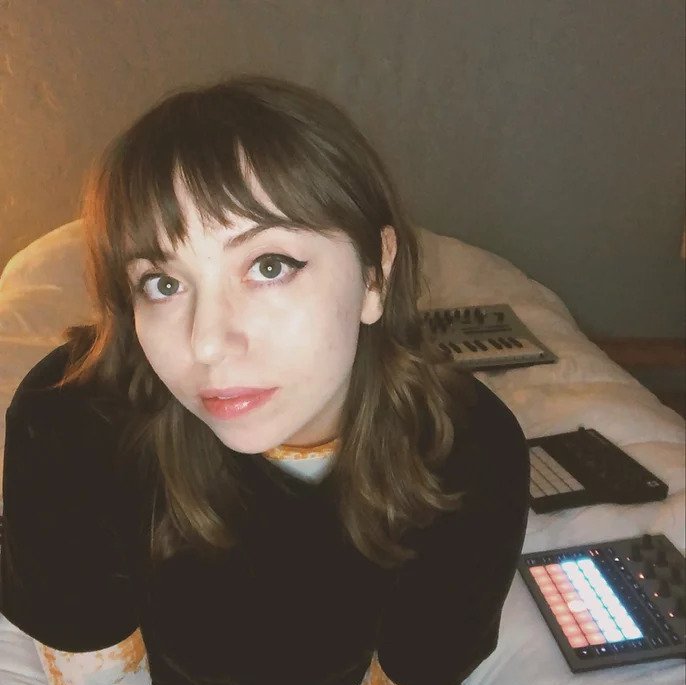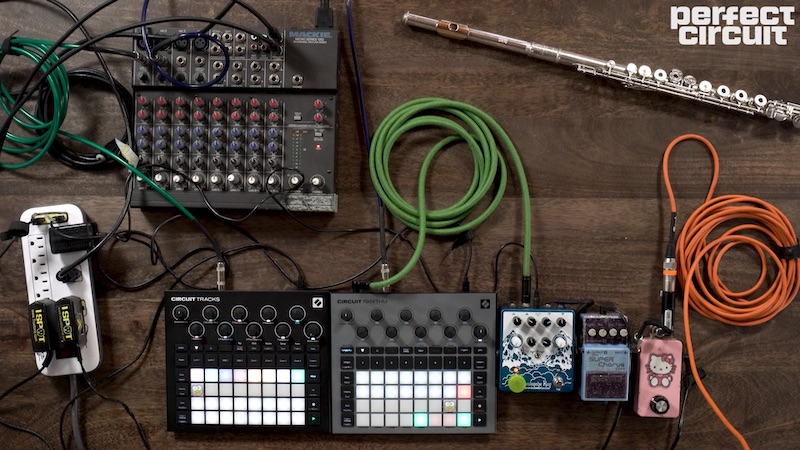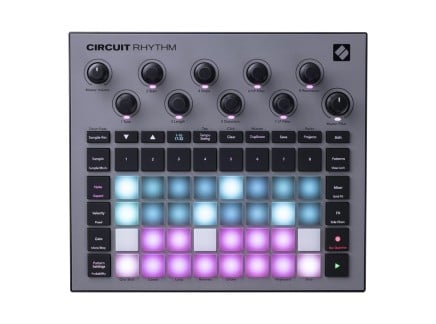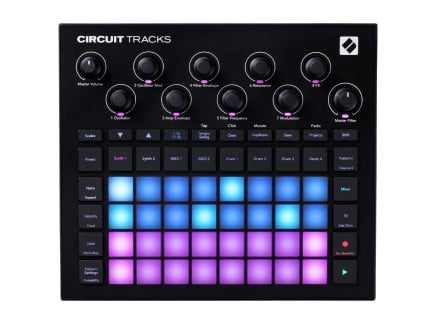At Perfect Circuit, combining traditional instruments with electronic music production and sound manipulation is one of our greatest passions. Combining these two worlds opens each of them up considerably: combining the flexibility of electronic production with the natural expressiveness and nostalgic qualities of acoustic instruments can make for an astonishing range of textures and emotions.
Perhaps one of the most interesting aspects of this sort of combination is that it becomes so deeply personal—it's very possible, for instance, that two electronic musicians working in the same genre could have exactly the same toolkit, and therefore would wind up making music that sounds quite similar. Joining the world of electronic music with acoustic music, though, makes for slightly more uncanny pairings...and seeing how instrumentalists grapple with the open-ended task of fusing these worlds instantly reveals a lot about their own artistic sensibilities. Often, it leaves them in a space where they're able to forge an instantly identifiable, compelling, and singular sound.
As such, we've recently been taken with the multi-talented Jessica Fennelly, an LA-based producer, composer, DJ, and multi-instrumentalist who performs/creates as DateNite. Luckily, she took the time to come by our studio and talk us through a recent production workflow using voice, flute, guitar, effect pedals, and Novation's Circuit Rhythm and Circuit Tracks—so check out the video above and read on to get a sense of what her music is like, and how it's made.
Who is DateNite?
Combining instrumental chops with a mellow, mildly melancholic, and gently loose/drifting approach to production and songwriting, DateNite's tracks play out like overlapping waves of dream and hazy memory. Meandering melodies coalesce with staggering sample-based grooves and lo-fi layers of pads and reverb—leaving us with something evocative, nostalgic, charming, and instantly comfortable/familiar.

While many musicians these days get their start working with electronics, DateNite has a long history with more traditional music. A lifelong guitarist and flautist, she carries a music performance degree from the Boston Conservatory. Her love for electronic music was developing at this time, listening to everything from Björk to Four Tet—but DateNite didn't get her start making electronic music until after college, at which point she felt the need to explore new avenues of her creativity. Through experimenting with workflows that included MIDI guitar, Korg Minilogue analog synthesizer, and other gear, she started developing a unique electronic voice—one that has developed into something particularly interesting.
Now, a self-proclaimed gear enthusiast, her music blends the natural qualities of voice, guitar, and flute with the starkly different textures of analog and digital synthesis. Using sampling and sound manipulation as a common ground between the acoustic and electronic sound worlds, she's carving out a compelling sonic space for her music.
DateNite's recent release "Changes" is now available on all streaming platforms—but of course, we strongly recommend scoping out DateNite's Bandcamp page for a deep dive through her full catalog. You'll find everything from pulsating club tracks to wayward arpeggios, frenetic sample collages, and much more—all with a strikingly human touch. And of course, you can scope out her Instagram account to keep up-to-date on new projects and performances.
But, being that most of us here are also gear enthusiasts...you might be wondering how some of this music comes to be. Don't fret—we've got you covered.
DateNite's Sampling Techniques
In the setup she brought to our studio, DateNite focused on a sampling-based workflow that she uses to structure pieces for recordings and live performance. Using her voice, flute, and guitar as sound sources, she walked us through her preferred sampling workflow for the Novation Circuit Rhythm, and then demonstrated how the results could play out in a live performance.
One interesting aspect of her workflow is that the sound sources aren't sampled directly into the Circuit Rhythm—instead, they first pass through a chain of effects. Starting with a single-knob, nameless pink pedal with a Hello Kitty sticker (perhaps a compressor, or a boost/preamp?), the signal then passes into a BOSS CH-1 Super Chorus, and then into an Earthquaker Devices Avalanche Run.
Though this effect chain might seem simple, it is quite potent: incoming sounds can be given any amount of liquid swirl via the chorus or spacious textures via the Avalanche Run. Moreover, Fennelly doesn't treat these as set-and-forget effects—while she's recording voice and guitar, for instance, she reaches down to the pedals and manipulates them in real time, printing the resulting Doppler shifts and accelerating swirls into the samples themselves. This is reminiscent of a similar sampling workflow that Nick Reinhart showed us...sure, it would be possible to apply effects to the samples later, but by capturing something evocative right out the gate, it becomes easy to build a track with a lot of personality and atmosphere. No need to overcomplicate things.

Another interesting aspect of DateNite's approach is that, while she does sample with a backing track playing (for a rough pitch/rhythm reference), she isn't sampling highly specific licks or riffs from her guitar, flute, or voice. Instead, she's using the backing track as a reference for looser improvisational playing, sure to capture a mix of different playing styles along the way. Then, once the sample is committed to the Circuit's memory, she takes time to trim the improvised recording, experimenting with how different start points interact with the underlying sequenced accompaniment. Knowing her other music, this process makes a lot of sense—using improvised lines as source material for samples is an excellent way to create the loose, evocative types of rhythmic overlap that her music uses to such great effect. By leaving in a certain amount of chance and using intuition to find the right part of a sample to hone in on as a starting point, unexpected rhythms start to emerge. In fact, I think the most interesting aspect of this setup is less about the gear used, and more about DateNite's reliance on a mixture of artistic intention and trust of coincidence to create her lo-fi yet engrossing soundscapes.
After capturing a few samples and taking time to find the right parts to hone in on, things open up considerably: she can then use the Circuit Rhythm to re-pitch, sequence, and live-perform these samples. Combining the newly-captured sounds on the Circuit Rhythm with some pre-prepared material on the Circuit Tracks, she gives us an idea of how these basic techniques can lead to a skillfully-assembled live performance.
Intuition + Coincidence
A point worth pondering—DateNite's live rig doesn't contain anything particularly rare, expensive, or flashy. In fact, many of these pieces are common enough on the used market, and usually readily in stock from retailers (like ourselves). But by exploring how to add her other talents into her electronic music practice, she creates a quite distinct voice.
Aside from the general awesomeness of adding acoustic instruments into electronic music production/performance, the other thing that bears consideration is her use of loose improvisation while sampling and her embrace of coincidence. It's not necessary to have a specific musical vision about how every single note and every single rhythm fits together before you start creating: in her case, she's setting up a basic foundation and then simply trying things out, carefully listening for useful or interesting coincidences that could drive her music forward.
So what does that mean for you? I take away this lesson: while gear is a lot of fun, it doesn't have to be the whole of your musical practice. Take time to experiment, to play, and most importantly, to listen—when you do, you'll find that following your musical instincts leads to something that feels uniquely like you.













